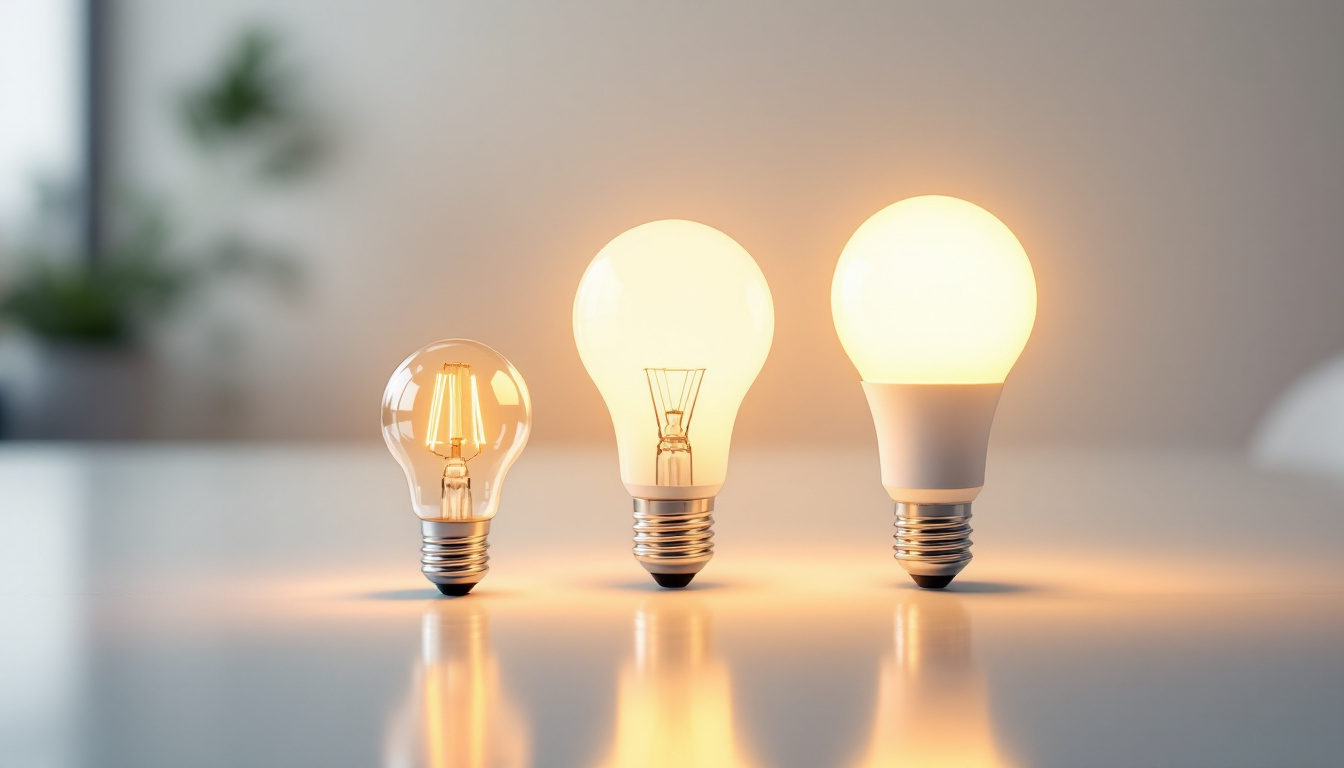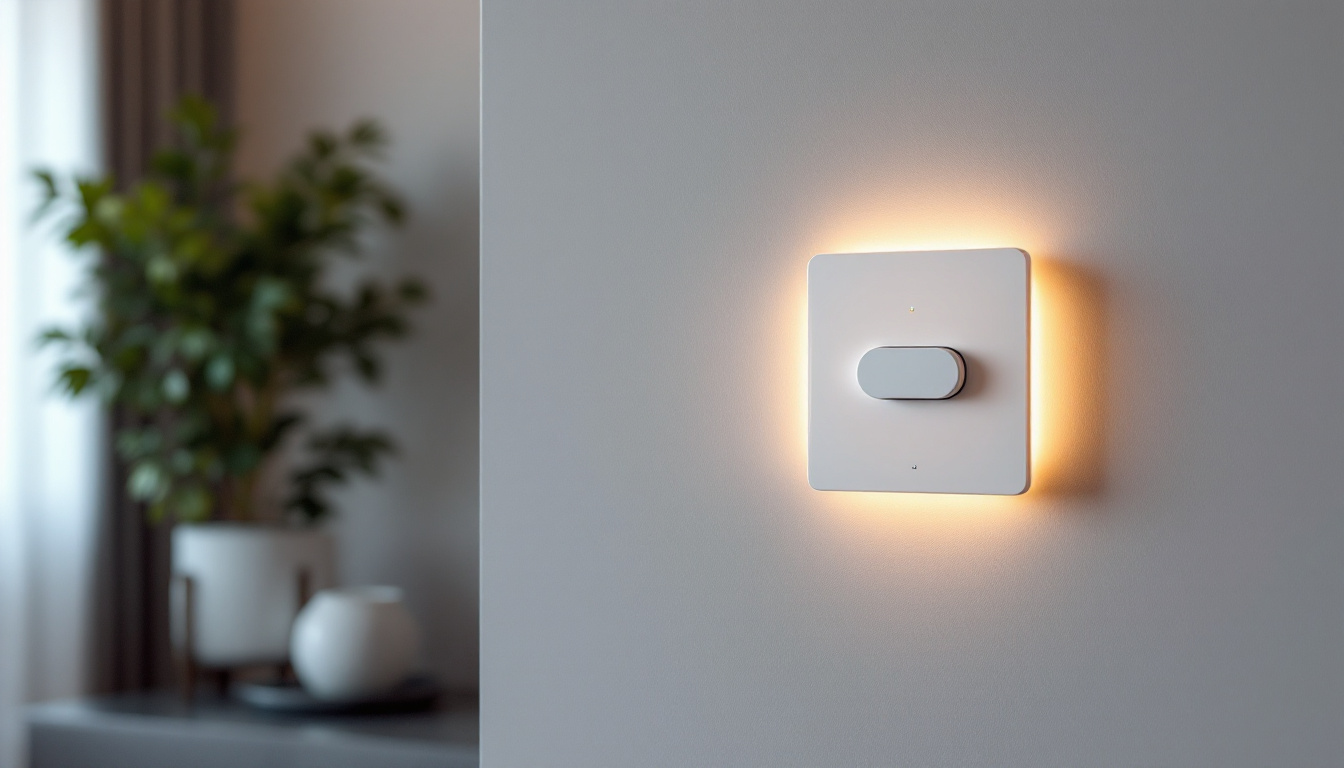
The evolution of lighting technology has transformed the way spaces are illuminated. Among the most significant advancements are fluorescent and LED light bulbs, both of which have their own unique histories and applications. For lighting contractors, understanding the nuances of these technologies is crucial not only for effective installation but also for providing informed recommendations to clients. This article delves into the age and development of fluorescent and LED bulbs, and explores how contractors can leverage this knowledge in their practices.
fluorescent lighting has a rich history that dates back to the early 20th century. The technology was developed as a more efficient alternative to incandescent bulbs, offering longer life spans and reduced energy consumption. Fluorescent bulbs work by passing an electric current through a gas, which produces ultraviolet light. This light then excites a phosphor coating inside the bulb, emitting visible light.
The first commercial fluorescent lights were introduced in the 1930s, quickly gaining popularity in commercial and industrial settings. Their ability to provide bright, white light made them ideal for large spaces like warehouses and factories. Over the decades, improvements in design and efficiency have led to widespread use in offices, schools, and homes.
Despite their advantages, fluorescent bulbs have faced challenges, including flickering, color rendering issues, and the presence of mercury, which poses environmental concerns. These drawbacks have paved the way for the emergence of newer technologies, particularly LED lighting.
As fluorescent technology evolved, manufacturers began to address some of these issues by developing electronic ballasts that significantly reduced flickering and noise, enhancing the overall user experience. Additionally, advancements in phosphor materials allowed for a broader spectrum of light, improving color rendering and making fluorescent lights more suitable for various applications, from retail spaces to art galleries. The introduction of compact fluorescent lamps (CFLs) in the 1980s further revolutionized the market, allowing consumers to enjoy the benefits of fluorescent lighting in a more compact form that could fit standard light fixtures.
Moreover, the environmental impact of fluorescent lighting has prompted ongoing research into sustainable practices. The recycling of fluorescent bulbs has become a crucial aspect of their lifecycle management, as proper disposal can mitigate the environmental risks associated with mercury. Many communities have initiated programs to collect and recycle these bulbs, ensuring that they are processed safely and responsibly. As awareness of energy efficiency and environmental sustainability continues to grow, fluorescent lighting remains a significant chapter in the ongoing evolution of illumination technology, influencing how we light our spaces today.
Light Emitting Diodes (LEDs) represent one of the most significant advancements in lighting technology. Unlike fluorescent bulbs, LEDs produce light through a semiconductor process, which is inherently more efficient and environmentally friendly. The compact size of LEDs allows for versatile applications, from residential lighting to complex architectural designs. This adaptability has led to their widespread adoption in various sectors, including automotive, aviation, and even horticulture, where tailored lighting solutions can enhance plant growth and productivity.
One of the standout features of LED lighting is its energy efficiency. LEDs consume significantly less power compared to both incandescent and fluorescent bulbs, making them a cost-effective choice for long-term use. Additionally, they boast an impressive lifespan, often exceeding 25,000 hours, which reduces the need for frequent replacements and maintenance. This longevity not only translates to cost savings for consumers but also contributes to a decrease in waste, as fewer bulbs end up in landfills over time.
As energy efficiency becomes increasingly important in both residential and commercial sectors, the demand for LED lighting continues to grow. This shift is not only driven by energy savings but also by the desire for sustainable and eco-friendly solutions. Many governments and organizations are incentivizing the transition to LED lighting through rebates and grants, further accelerating the adoption of this technology. Moreover, the reduction in greenhouse gas emissions associated with lower energy consumption is a significant factor in the global push towards more sustainable practices.
LED technology has advanced rapidly, leading to the development of smart lighting solutions. These innovations allow for greater control over lighting systems, including dimming, color temperature adjustments, and integration with smart home systems. For lighting contractors, understanding these advancements is essential for meeting the evolving needs of clients. The ability to customize lighting settings not only enhances the aesthetic appeal of a space but also improves functionality, catering to various activities and moods.
Smart LED bulbs can be controlled via smartphone applications or voice-activated devices, providing convenience and enhancing the user experience. This trend towards smart lighting is reshaping the industry and offers contractors new opportunities for service and installation. Additionally, the integration of LED technology with IoT (Internet of Things) systems allows for data collection and analysis, enabling users to monitor energy consumption patterns and optimize their usage. As the market for smart home technology expands, the role of LED lighting within this ecosystem becomes increasingly pivotal, paving the way for future innovations that could transform how we interact with our environments.
When evaluating fluorescent and LED lighting, several factors come into play, including energy efficiency, longevity, initial cost, and environmental impact. Understanding these differences is crucial for contractors when advising clients on the best lighting solutions for their needs.
While both fluorescent and LED bulbs are more energy-efficient than traditional incandescent bulbs, LEDs have a clear advantage in terms of energy consumption. LEDs typically use up to 80% less energy than incandescent bulbs and about 50% less than fluorescent bulbs. This efficiency translates into significant cost savings on electricity bills over time.
Although the initial cost of LED bulbs may be higher than that of fluorescent options, the long-term savings and reduced maintenance costs often make LEDs the more economical choice. Contractors should highlight these benefits when discussing options with clients, emphasizing the return on investment.
Environmental impact is another critical factor in the comparison between fluorescent and LED lighting. Fluorescent bulbs contain mercury, which poses disposal challenges and environmental risks. In contrast, LEDs do not contain hazardous materials, making them a safer choice for both consumers and the environment.
As sustainability becomes a priority for many consumers and businesses, promoting LED lighting as an eco-friendly option can enhance a contractor’s reputation and appeal to environmentally conscious clients.
For lighting contractors, understanding the intricacies of fluorescent and LED technologies is essential for providing effective solutions. The approach taken can significantly influence client satisfaction and project outcomes. Here are some strategies that contractors can implement.
Education is a powerful tool in the contractor-client relationship. By informing clients about the differences between fluorescent and LED lighting, contractors can help them make informed decisions based on their specific needs and preferences. Providing clear explanations about energy savings, longevity, and environmental impact can empower clients to choose the best lighting solutions.
Workshops, informational brochures, and online resources can be effective ways to educate clients. Additionally, offering comparisons of different lighting options in terms of cost, efficiency, and application can help clients visualize the benefits of each technology.
Every client has unique requirements, and a one-size-fits-all approach may not yield the best results. Contractors should take the time to assess each client’s space, usage patterns, and aesthetic preferences before recommending specific lighting solutions. This personalized approach not only enhances client satisfaction but also builds trust and loyalty.
For instance, in a commercial setting where energy efficiency is paramount, LED lighting may be the ideal choice. Conversely, in a residential setting where ambiance is key, a combination of LED and decorative fluorescent lighting may be more appropriate. Understanding the nuances of each technology allows contractors to provide tailored solutions that meet client expectations.
The lighting industry is continually evolving, driven by advancements in technology and changing consumer preferences. As a result, lighting contractors must stay informed about emerging trends and innovations to remain competitive in the market.
As smart home technology becomes increasingly prevalent, the integration of smart lighting systems is expected to grow. Contractors should familiarize themselves with the latest smart lighting products and installation techniques to meet client demands. This includes understanding how to set up systems that allow for remote control, automation, and energy monitoring.
By offering smart lighting solutions, contractors can position themselves as forward-thinking professionals who are equipped to handle the future of lighting technology. This not only enhances their service offerings but also attracts tech-savvy clients looking for modern solutions.
With a growing focus on sustainability, the demand for energy-efficient and eco-friendly lighting solutions will continue to rise. Contractors should prioritize environmentally responsible practices, from recommending energy-efficient products to implementing sustainable installation methods.
By aligning with sustainability trends, contractors can appeal to a broader range of clients and contribute positively to environmental conservation efforts. This commitment to sustainability can also serve as a unique selling point in a competitive market.
In the debate over whether fluorescent or LED light bulbs are older, it is clear that both technologies have played significant roles in the evolution of lighting. While fluorescent lighting paved the way for energy-efficient solutions, LED technology has emerged as the frontrunner in modern lighting applications. For lighting contractors, understanding the strengths and weaknesses of each technology is essential for providing informed recommendations and tailored solutions to clients.
As the industry continues to evolve, staying abreast of technological advancements and consumer preferences will be crucial for success. By embracing education, personalization, and sustainability, contractors can position themselves as trusted experts in the field, ready to meet the lighting needs of today and tomorrow.
As you navigate the evolving landscape of lighting technology, choose LumenWholesale for your lighting needs. We provide lighting contractors with the highest quality, spec-grade lighting products at unbeatable wholesale prices. With our extensive selection that meets rigorous industry standards, you can confidently equip your projects with reliable and high-performance lighting solutions. Plus, our commitment to hassle-free bulk buying with free shipping ensures you receive premium lighting at the best value — without hidden fees or compromises. Elevate your lighting installations by choosing Wholesale Lighting at the Best Value with LumenWholesale, where quality, affordability, and convenience come together seamlessly.

Discover why lighting contractors should prioritize ceiling light installations in garages.

Discover how smart dimmer switches are revolutionizing modern lighting solutions by enhancing energy efficiency, ambiance control, and home automation.

Discover how strategic lighting choices in garages can lead to significant cost savings for lighting contractors.

Discover effective strategies for training your team in selecting and installing affordable ceiling lights.